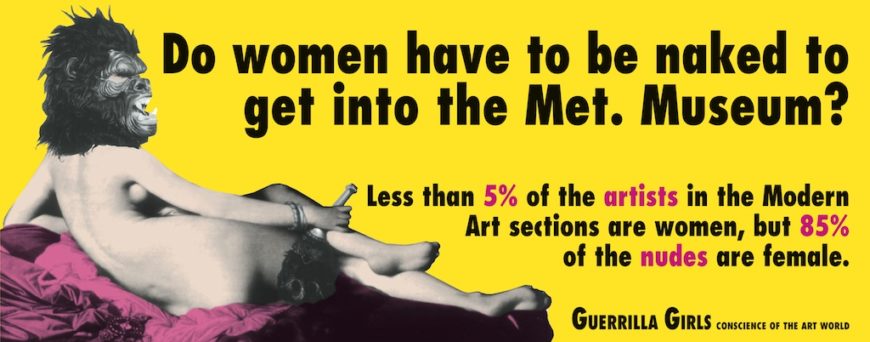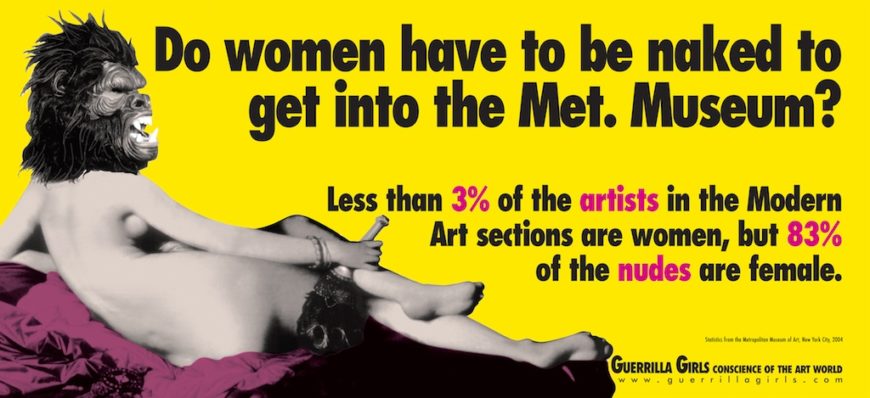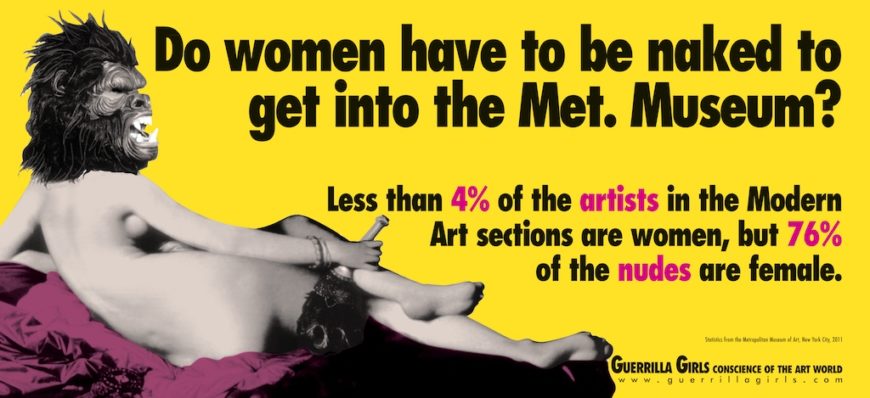All artists are influenced by the styles and media of others, even those who stridently claim otherwise. Early Greek art influences later Greek art. Early Chinese painting influences later Chinese painting. We will look at some straightforward examples of these sorts of borrowings, but will also look at more unexpected moments of influence, where artists look to unusual or unexpected sources as inspiration for their work, or manipulate their sources in interesting and nuanced ways.
Copying Great Masters
In Europe, at least since the Renaissance, there has been an active tradition of artists learning and improving by copying the works of so-called “great masters,” like Michelangelo. Here is an example of Michelangelo’s use of a figure by the Early Renaissance artist Masaccio—a sketch he drew, based on a fresco from the Brancacci Chapel. In Masaccio’s image, we see St. Peter paying a tax collector. Masaccio was celebrated in his own day for his ability to create lifelike figures that seem to move through convincing, illusionistic spaces. Peter, in gold and blue robes, seems to have volume, to occupy real three-dimensional space, to stand firmly on the ground, over which he casts a soft shadow. This is conveyed through the use of light and shading. The light pours over the figure from the right, striking his face and the front of his robes, and leaving his back in shadow. The deep folds of his robes are also darkened with shadow.
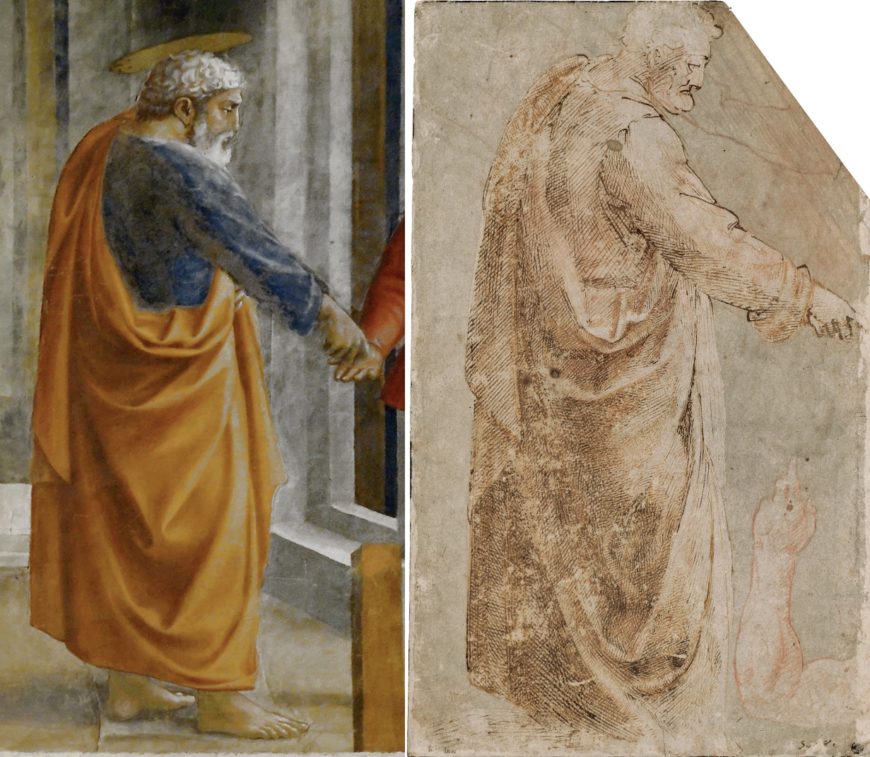
Left: Masaccio, The Tribute Money, c. 1427, fresco (Brancacci Chapel, Santa Maria del Carmine, Florence; photo: Steven Zucker, CC-BY-SA 2.0); right: St. Peter (after Masaccio),red chalk, pen in various shades of brown, the figure of Peter and the study on the lower arm later backed in light blue watercolor, 31.7 x 19.7 cm (Staatliche Graphische Sammlung, Munich)
According to later sources, Michelangelo spent months in the Brancacci Chapel studying and copying Masaccio’s work. Only a single sketch, based on the figure of Peter, is thought to survive from this period. Here, we can see Michelangelo not only copying, but also adapting his model. The figures, wearing the same robes and lit from the same angle, stand in nearly identical poses. The differences between the figures, though subtle, are important. Where Masaccio’s figure stands on his back foot, and seems immobile, Michelangelo’s figure is stepping forward, and his weight seems convincingly shifted to his front foot as he leans forward to pay the tax collector. Michelangelo also dips Peter’s right shoulder down and forward. This helps render Peter’s arm less stiff and more graceful, and the larger cuff that Michelangelo adds exaggerates the gesture. Peter’s robes fall more naturally, as if following the motion of the figure. Finally, whereas Masaccio’s figure is nearly expressionless, Michelangelo adds—through the addition of only a few quick strokes of ink to Peter’s face—a note of sorrow to the image. The pose and expression together make the figure more emotionally compelling, even though it is a sketch.
What is most remarkable about these changes is that they were not made from a new model, posed as Masaccio’s was. Instead, they were based on the original fresco, altered and augmented by Michelangelo’s imagination. This is a case of an artist not merely copying a prior master’s model, but actively reworking it to make it his own.
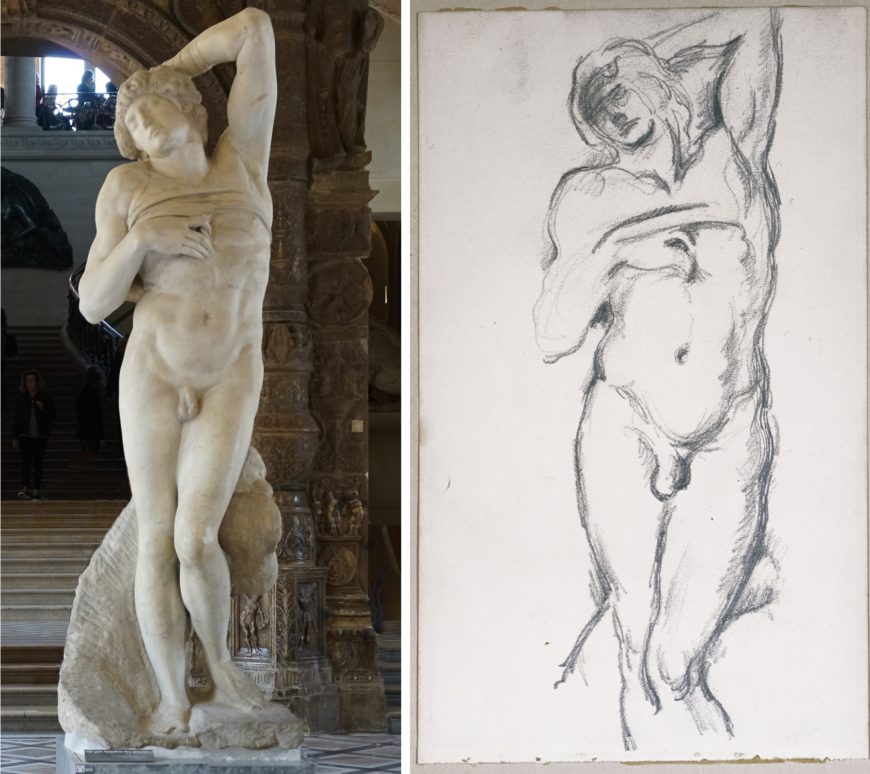
Left: Michelangelo, Dying Slave, 1513–15, marble, 2.09 m high (Louvre, Paris); right: Paul Cézanne, after a sculpture by Michelangelo from Sketchbook II, 1885–1900, graphite on wove paper, 21.6 x 12.7 cm (Philadelphia Museum of Art)
Michelangelo, in turn, would become one of the most frequently copied of artists. Among a great many others, the nineteenth-century Post-Impressionist painter Paul Cézanne produced copies of works by Michelangelo. He made many drawings based on Michelangelo’s two sculptures in the Louvre Museum in Paris. As Michelangelo reinterpreted Masaccio’s work for his own ends, so Cézanne reinterpreted Michelangelo. Many artists who have copied Michelangelo’s works have focused on his heightened naturalism, on his way of capturing and elevating the human body, or on studies of light and shadow—much as Michelangelo re-envisioned Masaccio’s work. Cézanne, though, presents us with a curiously simple sketch. It seems washed out, like a photograph taken with too much light. Only the deepest shadows are represented. The facial features are only just barely sketched in and the muscles are more implied than represented. This approach, which makes the soft and curving body of Michelangelo’s figure into more generalized geometric forms, is typical of Cézanne’s work.
Copying other cultures
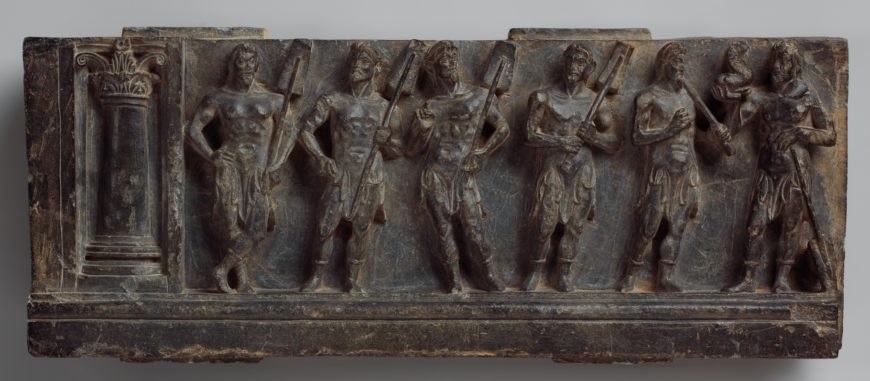
Stair Riser with Marine Deities or Boatmen, c. 1st century, Pakistan (ancient region Gandhara), 16.8 cm high, serpentinite (The Metropolitan Museum of Art)
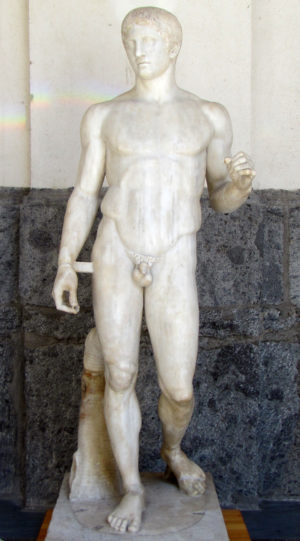
Doryphoros (Spear Bearer), Roman copy after an original by the Greek sculptor Polykleitos from c. 450-440 B.C.E., marble, 6’6″ (Archaeological Museum, Naples) (photo: Steven Zucker, CC BY-NC-SA 2.0)
While many artists copy the works of artists from within their own culture—contemporary or historic—some look to other cultures for models. The meeting of two cultures can result in conflict and violence, but also in trade and the exchange of ideas.
Greek sculpture, like the Doryphoros, has proven to be extremely influential on Western art, but also came to have an impact on the art of other cultures. Alexander the Great conquered much of the Mediterranean basin, including parts of what are now Iran, Afghanistan, and Pakistan, and in these regions established Greek-style cities, complete with Greek-style architecture and art. These works came to influence representations of local deities.
A relief panel of Buddhist marine deities from the Gandhara province of Northern Pakistan, for example, shows a series of highly naturalistic, idealized, muscular male figures. They stand casually, in Greek-style contrapposto—with their weight on one leg and a gentle S-curve to their bodies. The column at the left is topped with a capital in the Greek Corinthian style. Were this not part of a stairway of a Buddhist stupa, we might have a hard time telling it from Greek originals.
A millennium and a half later, we find a South Asian work that also borrows from a European prototype, though this time both the subject and composition are borrowed, while the style remains more characteristically local. The emperor Akbar, who expanded the Mughal Empire to include what is now Afghanistan, Pakistan, and northern India, was a Muslim, and was curious about other religions. He invited to his court guests who were Hindus, Christians, and Zoroastrians, among others. He housed a group of Jesuit missionaries in his palace, and ordered his court painters to produce images of Christian subjects based on his collection of European paintings and prints. Akbar was not interested in conversion to Christianity. He practiced religious tolerance and actively encouraged cross-cultural borrowings.
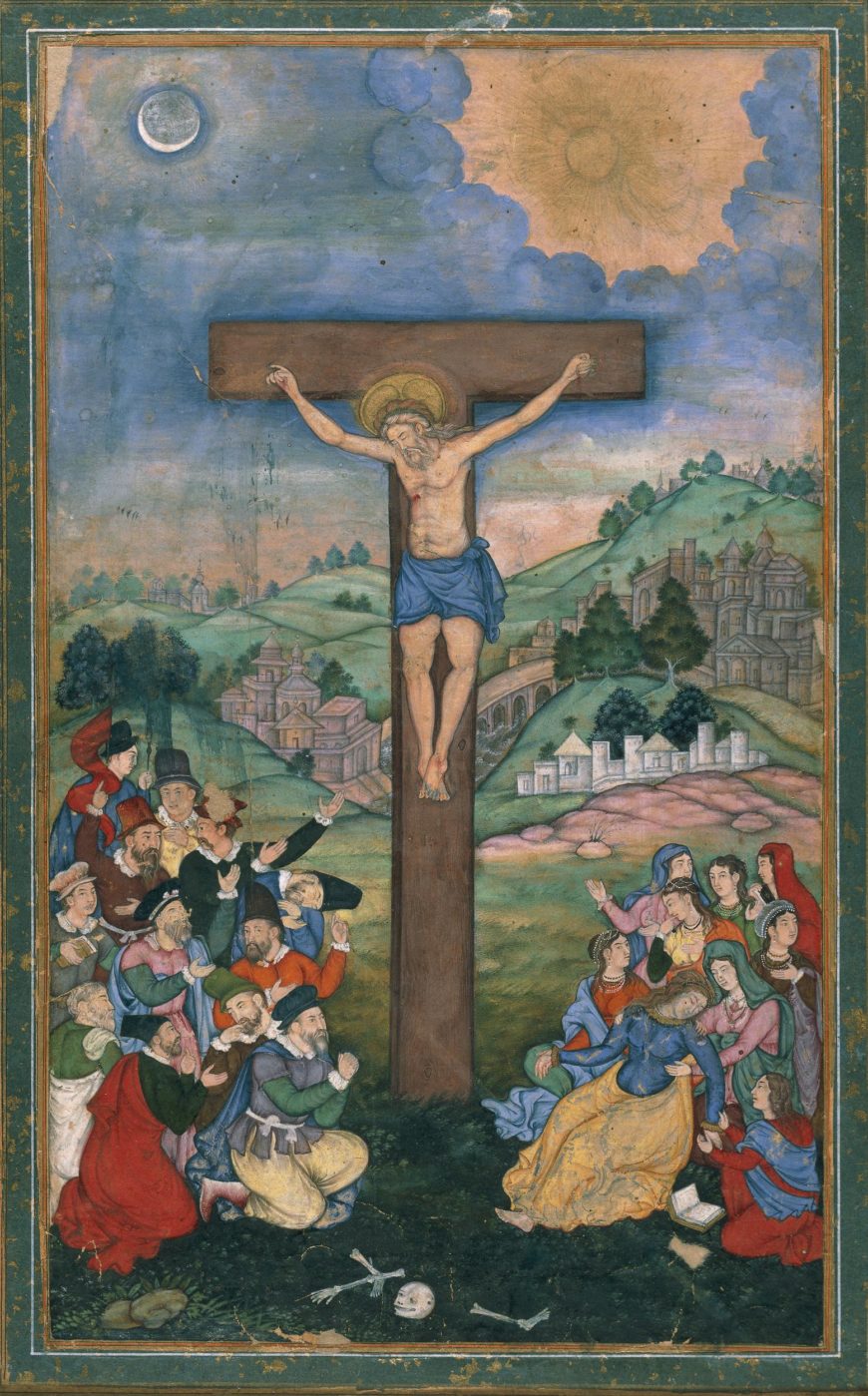
Attributed to Kesu Dás, Crucifixion Scene, c. 1590, 29.3 x 17.7 cm (The British Museum)
A crucifixion painting produced for Akbar’s courts and attributed to Kesu Das was probably based on a Flemish print that was likely created about a decade earlier. It follows European convention in its design and layout: Jesus appears at the center, and to the sides are groups of his followers. To the right, Mary (in blue and yellow) faints as Saint John (in red) kneels by her side. We see the sun and moon above, a reference to the belief that at the moment of Jesus’s death, there were total eclipses of both, as well as an earthquake. The figures all round Mary and John, though, appear in traditional Mughal dress, with elaborate robes and jewelry. The men to the left are depicted as Europeans, presumably as the Jesuits who lived at the Mughal court. The landscape is depicted in a European style, with layers of hills receding deep into the distance, and with the horizon line—where the sky meets the land—near the vertical center of the painting, whereas earlier Mughal paintings usually have the horizon line almost at the top of the image.
The bright colors are typical of Mughal painting. The buildings, like the women’s clothing, are Mughal in design, which has the effect of setting the crucifixion in India. This is, in a way, typical rather more than radical; European scenes traditionally set the scenes of the Bible in European rather than Middle Eastern landscapes (for example, in the backgrounds of Dutch and Flemish crucifixions, we find windmills and in German examples, we see the pointed spires of Gothic cathedrals). This work, then, brings together styles, traditions, and cultures. It is clearly based on European prototypes, but is an inventive interpretation of the scene that copies its European model, while bringing the scene into the local context of its patron.
Copying to challenge the canon
Feminist artists have worked to break down the canon (the works art historians have generally declared to be exemplary and timeless), which traditionally excluded all female artists. Judy Chicago’s landmark work, The Dinner Table was an early and bold challenge to the canon of “important” (and inevitably male) artists.
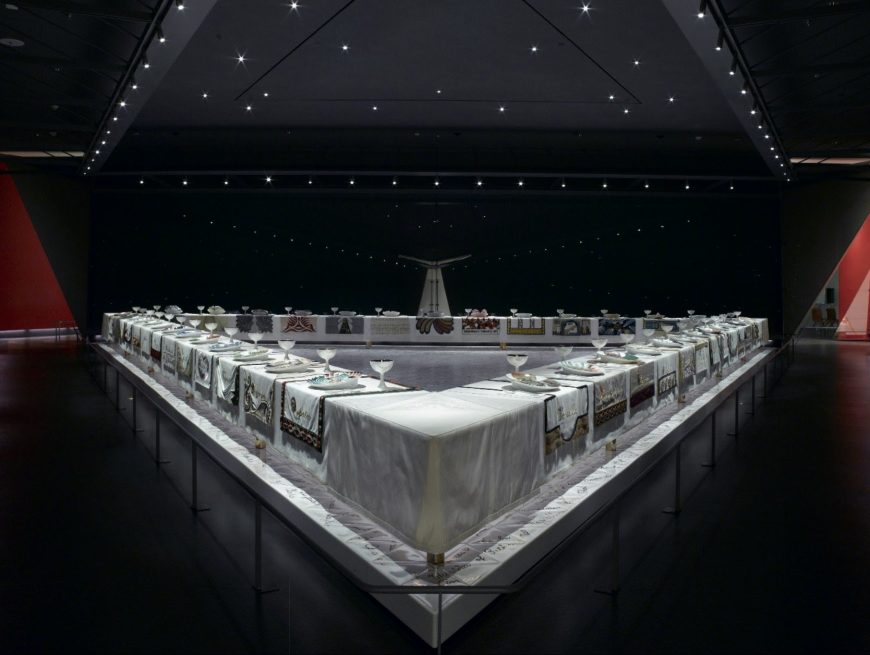
Judy Chicago, The Dinner Party, 1974–79, ceramic, porcelain, textile, 1463 × 1463 cm (Brooklyn Museum)
The work, permanently installed in the Brooklyn Museum of Art, consists of a large triangular table almost 50 feet long on each side, set with elaborate place settings for 39 women with prominent, but historically underappreciated, roles in the history of art. Many of the women are artists, but others are mythical and historical figures. They include, for example, a prehistoric “Fertile Goddess,” Hatshepsut (a female Egyptian pharaoh), Sappho (the ancient Greek lesbian poet), Artemisia Gentileschi (a Baroque painter), Sojourner Truth (an African American abolitionist and advocate for women’s rights) and Georgia O’Keeffe (an American painter). Each place setting features a plate with imagery copied—sometimes loosely, sometimes more directly—from earlier works. The imagery on the plates is suggestive of female reproductive power, and the placemats are embroidered with the sitter’s name and decorated with related imagery. Through her choice of subjects and models for her copies, Chicago creates a new canon of previously-excluded female figures.

Judy Chicago, The Dinner Party (Fertile Goddess place setting), 1974–79, mixed media: ceramic, porcelain, textile © Judy Chicago (Brooklyn Museum)
The Fertile Goddess place-setting relies on copies of some of the earliest sculptures produced by humanity—small pebbles sculpted to represent fertile women, usually with highly exaggerated breasts and pubic triangles, as in the famous Woman of Willendorf (also known, problematically, as the Venus of Willendorf). In this prehistoric sculpture from c. 23,000 B.C.E., the female figure’s reproductive capacity is celebrated through the emphasis on her large breasts, wide hips, full abdomen, and clearly denoted genitals. Other major features—her face, hands, and feet—are obscured or ignored. This has led some archeologists and art historians to conclude that such images represent a goddess of fertility.
This goddess is one of the first in the chronological list of invitees to Chicago’s theoretical dinner party. The placemat is roughly sewn from coarse fabric to evoke the prehistoric context of the goddess. There are small reproductions of typical prehistoric fertility goddess sculptures attached to it. The plate at the center is decorated—as are many others in the work—with imagery reminiscent of flowers, which are the reproductive parts of a plant. The images, though, also evoke female genitals, celebrated throughout this work as humanity’s great generative force. Similarly, the unusual triangular shape of the entire table echoes the Woman of Willendorf’s pubic triangle.
The final place setting is prepared for Georgia O’Keeffe, an American artist famous for her dramatic, vivid paintings of flowers. Her Flowers of Fire is a typical work, showing a close-up view of the center of a flower. The soft, organic shapes and rich, warm colors, in roughly symmetrical arrangement, are highly suggestive of the folds of the female vulva. In this way, O’Keeffe was surely a strong influence on Chicago, whose imagery on the plates of The Dinner Table is often at once floral and vaginal. Not surprisingly, the place setting for O’Keeffe also features a soft, vaginal flower, now rendered three-dimensional. In this way, Chicago has not directly copied O’Keeffe’s work. She might have painted a copy of Flowers of Fire right onto the plate. Instead, she has taken inspiration from O’Keeffe’s oeuvre—from all the works she produced throughout her career—rather than looking to a single painting as a model, and then she translated it into her own terms, from two to three dimensions, from paint to sculpted pottery.
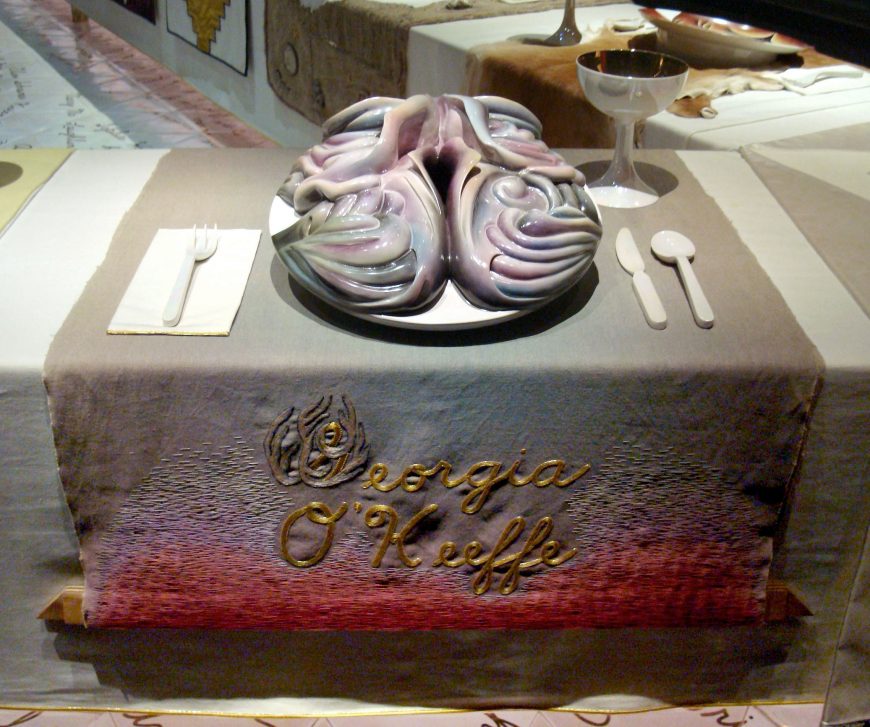
Judy Chicago, The Dinner Party (Georgia O’Keeffe place setting), 1974–79, mixed media: ceramic, porcelain, textile © Judy Chicago (Brooklyn Museum)
Throughout The Dinner Table (which also includes the names of hundreds of other women on the floor beneath the table and on the walls of a corridor leading to it), Chicago acknowledges the powerful sources not only of her own art, but also of the traditional canon. She does not so much invent a new canon as demonstrate the potent, unacknowledged role of women in the current artistic and cultural canon.
The Guerrilla Girls
The Guerrilla Girls, an anonymous collective of female artists, use reproductions of canonical works of art to attack the canon more directly. Among their most famous works is a poster originally produced in 1989 and updated in 2005 and 2012, titled Do Women Have to be Naked to Get Into the Met. Museum?. The title references The Metropolitan Museum of Art in New York City, the largest, most well-funded and most prominent art museum in the United States.
The bright poster was created in response to a request to create a billboard for the Public Art Fund of New York. The resulting work is a collage of images and texts. The female figure is a black-and-white reproduction of Jean-Auguste Dominique Ingres’s Grand Odalisque. The Guerrilla Girls chose this very famous image from 1814 not in order to celebrate it but to critique its objectification of the nude female body. They then placed their own emblem over her face. This is a pun—gorilla (the animal) in place of guerrilla (freedom fighter)—but also a challenge to representations of women. It is aggressive and hyper-masculine, with its heavy brow, angry expression, bared teeth and, of course, considerable facial hair. The mask denies the male viewer his usual role as sexual voyeur, and thereby disempowers both male viewer and male artist. Through the use of collage—combining pieces of two-dimensional works to make a new work—the Guerrilla Girls fundamentally transform the meaning of the work they copy.
The text also works to transform our reception of the image, in essence asking us to be offended by this famous and well-respected work. The bold text, written in a heavy black typeface for clarity and assertiveness, emphasizes their intent. The 1989 poster reads, “Do women have to be naked to get into the Met. Museum? Less that 5% of the artists in the Modern Art section are women, but 85% of the nudes are female.” The objection, then, is to two elements of the canon: first, that female artists are all but excluded from it; second, female nudes form a central and seemingly natural part of the canon, whereas male nudes are a minor element. As art historians have argued, an artistic canon is not made up of actual works, but of their reproductions in textbooks, postcards, and art history classroom slides. The Guerrilla Girls use a reproduction of a canonical work to strip it of its unquestioned place in the canon.
Interestingly (and problematically), as the Guerrilla Girls reproduced and updated their poster 23 years after its original publication, the numbers had not improved—indeed, while the percentage of female nudes declined a bit (from 85% to 76%), the percentage of female artists also declined (from 5% to 4%). In each version of this poster, the Guerrilla Girls use a copy of a famous work of art to make a strong statement about the state of the art world and the artistic canon, actively engaging with history in their own production.
Additional resources
The Case for Copying from the Art Assignment
Judy Chicago, The Dinner Party, at the Brooklyn Museum
Maddalena Bellavitis, Making Copies in European Art 1400–1600 (Brill, 2018)

